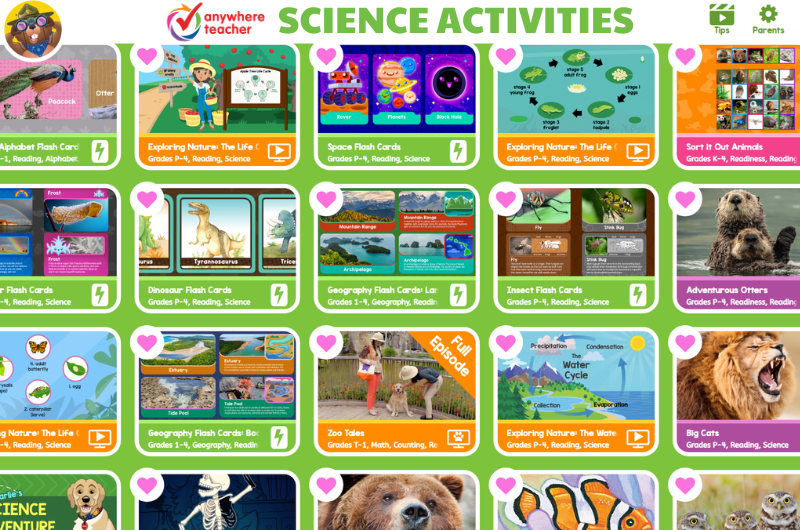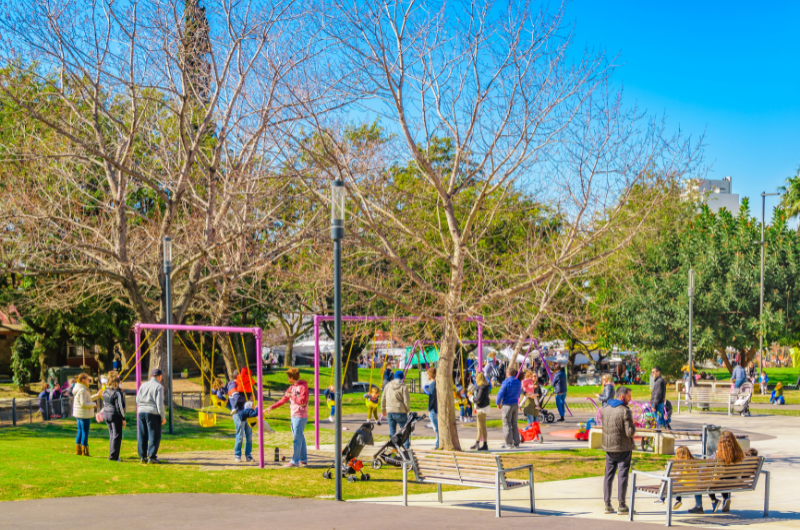Irish poet W.B. Yeats observed that "The world is full of magic things, patiently waiting for our senses to grow sharper." Showing kids the magic can also encourage kindness and empathy.
Get outside and be a guide

We tend to take care of what's important to us. Earth Day, celebrated April 22, seeks to raise awareness of the need to care for our planet and its resources. It's a great time to introduce kids to amazing facts and features about the natural world and to instill kindness and responsibility toward the people and creatures that inhabit our shared home—"roommates," if you will.


Another of several other ideas they offer is to "engage children in real life actions." They elaborate that "Whether it is planting trees, creating a garden, pulling invasive species, or picking up garbage—begin the stewardship mindset."

Fill It Forward, an organization whose mission is "to inspire the world to reuse," posted a blog on "Ways to Teach Children Environmental Stewardship."One suggestion is to "Demonstrate your own enjoyment of nature." They write that "Pointing out trees that you think are beautiful, or encouraging kids to smell flowers that are your favorites will show them that you also love and respect the natural world."
Bring natural-world science lessons indoors
Whether for reasons of weather or schedule, extended outdoor time may not be possible every day, but tools and products that help kids learn and marvel can turn indoor time "green." For example, plant a seed of interest in science, and watch it grow with School Zone's Big Science Grades 2-3 Workbook. Kids learn about weather, plants, insects, reptiles, birds, mammals, and more through a wide range of activities and hands-on experiments such as "condensation on a can" or a model for air pressure. Along the way, they develop vocabulary, critical thinking, problem-solving, and reading comprehension skills, along with science knowledge. Fun facts and the occasional riddle add to the adventure.

Or go to Anywhere Teacher, School Zone's learning app, sign up, and check out the charming videos "Exploring Nature: The Life Cycle of Butterflies" and "Exploring Nature: The Life Cycle of Frogs." Kids from preschool through fourth grade will find value in them.

Flash cards with pizzazz are another fun way to convey science and nature info. Across that same age range kids will go bug-eyed for Anywhere Teacher's fascinating Insect Flash Cards. They're crawling with fun and interesting facts about insects and show the basic bug body parts labeled. With Space Flash Cards, just flip the card for some cool, cosmic facts about each term! Learn the planets in the solar system, the difference between a meteor, meteoroid, and meteorite, and much more!
Fun non-fiction books on Anywhere Teacher such as Awesome Owls and Adventurous Otters and skill-building activities such as My Animal Facts: Fantastic Frogs or Animal Habitats with Charlie (P-K), among others, deliver still more angles on the animal kingdom, as kids develop lots of essential skills.
Nature is good medicine

Making kids care about nature helps us care for kids and ourselves. Several years ago, author Richard Louv coined the term "natural deficit disorder." As the American Society of Landscape Architects notes, Louv recognized that "Children are increasingly disconnected from their natural environment and spending more time inside." The ASLA says that "The idea that spending time in nature can make you feel better is intuitive." However, they also point to a mounting body of supporting research about the short- and long-term mental and physical health benefits. "But nature is not just wilderness," they emphasize, adding that "The benefits of nature can also be found in our communities' parks and green spaces."
HealthPartners®, a consumer-governed, non-profit health plan, posted a blog titled, "What Is 'Nature Deficit Disorder' and Can the Outdoors Really Make Us Feel Better"? It says that time spent outside can help with depression and anxiety. They say, "It can also…improve your memory and your ability to multitask and concentrate." The post further suggests that "Outside time can even improve your capacity for empathy—the ability to understand and share the feelings of others."
When we take care of what's important to us, sometimes it helps take care of us!












